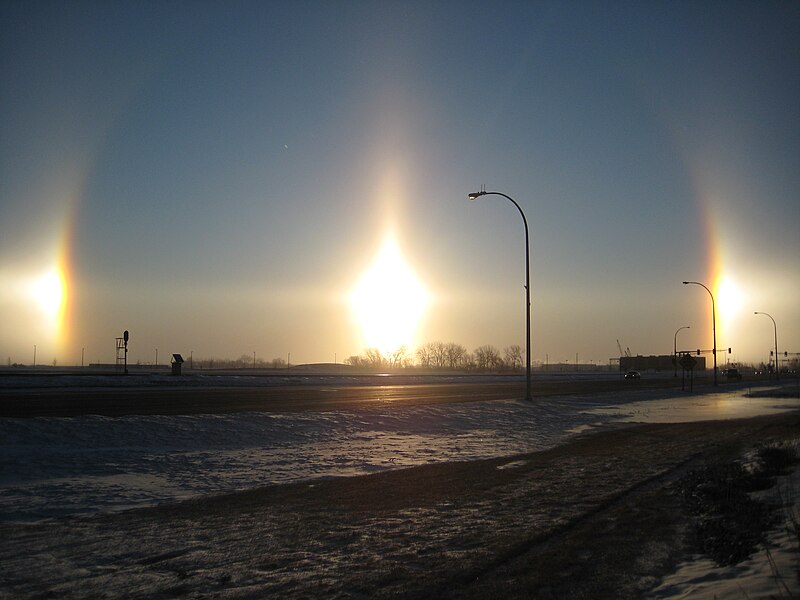I'd like to take a quick moment to debunk the idea at the bottom of this article, which I've seen in other places, that what was seen was actually a "sun dog". A sun dog is a refraction of sunlight in cirrostratus ice crystals; there are typically two of them, which are brighter spots in a ring around the sun at the same altitude as the sun. Here are the failures of the "sun dog" argument:
1) The sun rose two days early, not one. If there had been a sun dog on the first day which was somehow mistaken for the sun, it would have almost certainly not been seen in the same location the second day. If the sun had risen on the 11th but not on the 12th, then a lowered horizon would be less likely. But that isn't what happened.
2) Sun dogs are always at the same apparent altitude as the sun, so if the sun dogs were above the horizon the sun was as well.
3) It's Greenland, sun dogs are hardly a rare occurrence there. Neither the residents of Ilulissat or the dozens of scientists who are already there studying other effects of global warming are likely to mistake sun dogs for the actual sun.
4) It's already been reported that Ilulissat suffered massive deglaciation earlier in 2010.
5) One mile south of Ilulissat (the direction the sun would briefly rise) are rocky hills about 100 meters high, which would constitute the visible horizon. The hills would appear about 2° (or 2 cm by kamal) higher than the mathematical horizon, so in order for the previous year's ice to obscure the sun (at 30' arc diameter) the ice the previous years would have had to have been 25 meters thicker than this year. That's a big loss of ice in one year, but consistent with the deglaciation event this past summer, and given a typical annual snowfall of 5 meters which never usually melts it's actually surprisingly small.
Conclusion: Yes the sun really did rise two days early, and yes it is probably the result of global warming. And yes, global warming is the direct result of humans burning fossil fuels. There's no politics to this, it's just physics. If one's politics do not happen to agree with simple physics, then it's probably time to turn off Fox News and pick up a science text book.
 |
| Sun Dogs in Fargo North Dakota |
FIRST POST (www.thefirstpost.co.uk) -- Scientists claim to have discovered more evidence of global warming after the sun rose two days early in Greenland, apparently because melting glaciers have lowered the horizon.
The polar night usually ends on January 13, but this year residents of Ilulissat, the third largest settlement in Greenland, were surprised to see dawn arrive just before 1pm on January 11 after six weeks of perpetual darkness. Astronomers have ruled out the possibility of the early dawn being a result of a shift of the earth's axis and Thomas Posch, of the Institute for Astronomy of the University of Vienna, says a change in the horizon is "by far the most obvious explanation".
According to to the National Climatic Data Centre in North Carolina, 2010 was the warmest year on record and a separate report from the World Meteorology Organisation found that temperatures in Greenland were 3C above average last year.
However, not everyone accepts the explanation that melting glaciers are to blame. Message-boards are full of posts from conspiracy theorists blaming everything from chemtrails to a build-up of methane in the atmosphere or a shift in the earth's axis.
That last idea has been pooh-poohed by Wolfgang Lenhardt, director of the department of geophysics at the Central Institute for Meteorology in Vienna, who explains: "The data of the earth's axis and rotation are monitored continuously and meticulously and we would know if that had happened... there would have been an outcry around the world."
However he does suggest one other possible explanation - that ice crystals in the air had refracted the sun's light creating a mirage, known as a sun-dog, which appeared above the horizon.
No comments:
Post a Comment